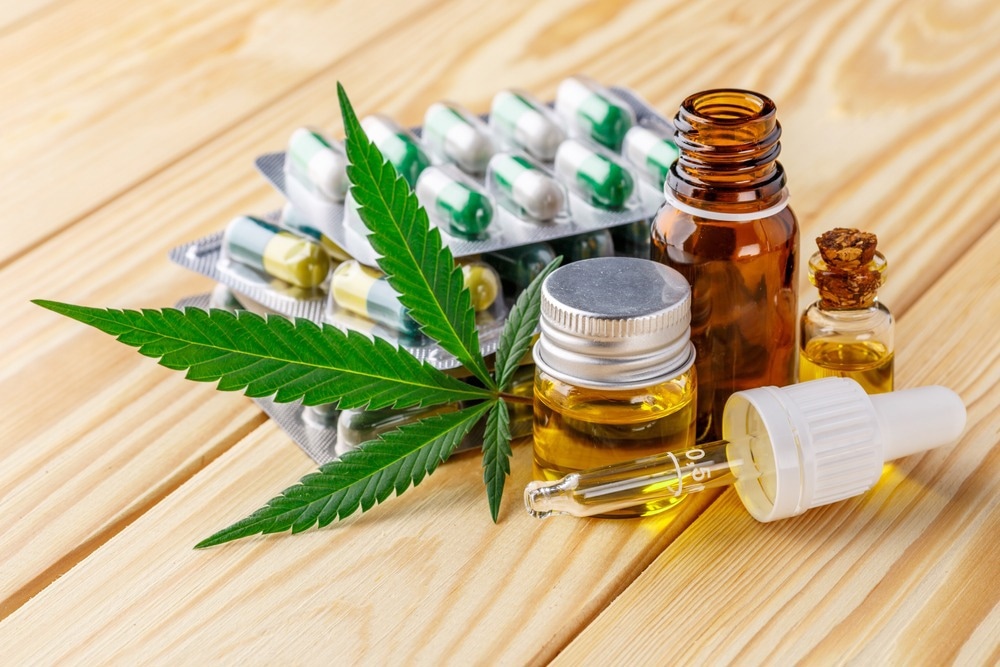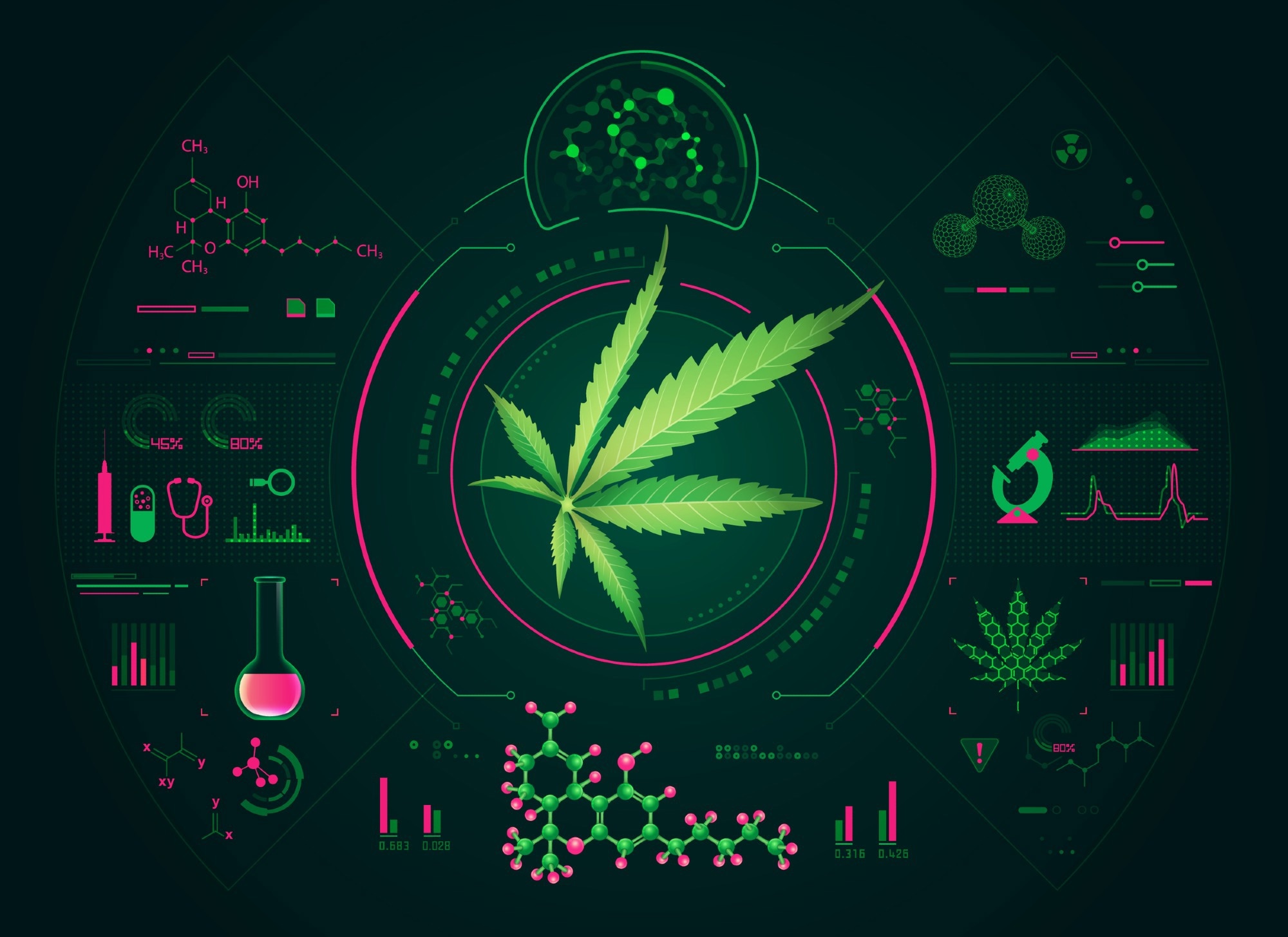The global pharmatization of cannabis is a tumultuous subject, polarizing many different communities and medical professionals alike. A litany of reasons has dissuaded the public from using this drug, which will be covered in this report.
Market research has been done, and many have found that the growth-inhibiting factor of the medical marijuana industry is doctors' reluctance to prescribe or offer the drug to patients. This is inherently true, given the strict laws globally imposed on the drug, with the United States, for example, classifying it as a schedule 1 drug, alongside lysergic acid diethylamide (LSD) and heroine.

Image Credit: Bukhta Yurii/Shutterstock.com
The history of cannabis in the medical industry
The act of smoking cannabis does not sit comfortability with doctors, politicians, and many others in the community. However, a much more prominent reason for this haltering of pharmaceutical cannabis is that "Big Pharma" operates by building an Intellectual property (IP) strategy around its marketed products. Big pharma cannot patent cannabis itself and have trouble researching its benefits regarding its state as a schedule 1 substance. Consequently, countries such as Israel, the Czech Republic, and the Netherlands have become world leaders in cannabis research, even though countries like the United Kingdom and the United States have much more resources to tackle this front.
Pharmaceutical benefits of cannabis
To those individuals that have done extensive research on cannabis, the heterogeneity and versatility of cannabis as an antitumor agent have become known. Studies by Turner AR et al. (2021) and Blake et al. (2017) have shown that cannabis extracts impair the proliferation and survival of cancer cell lines via induced apoptosis. It is demonstrated that a variable amount of Δ9-THC can differentially affect differing cancers.
If an individual wishes to access the biochemical pathways that lead to the therapeutic benefits of cannabis, you would need to look at the AKT/PKB signaling pathway and the cyclin-dependent kinase (CDK) pathway.
While CB1 receptors in the brain are concentrated in anatomical regions concerned with memory, pain, and endocrine function, CB2 receptors are found in peripheral tissues such as the spleen and play a role in the immune suppressive activity. This will lead to an upregulation in ceramide via the de novo synthesis pathway, condensing serine and palmitoyl-CoA. This production of ceramides will play an essential role in ER stress, which is an overexpression of the P8 enzyme. This can lead to the promotion of autophagy via dihydroartemisinin in cancer cells, which will finally result in apoptosis (programmed cell death.)
An auxiliary consequence of prolonged ER stress is inhibition of cdk1 and cdk9, leading to programmed cell death. One final trigger of apoptosis via this metabolic pathway is the phosphorylation of AKT murine thymoma in the viral oncogene homolog (AKT). This cell death can be geared toward various tumor models like Glioblastomas and has also been used in treating other diseases like Parkinson's, Huntington's disease, Lennox-Gastaut & Dravet Syndrome, and so on.
These metabolic biomarkers all conclude that the cannabis plant and its secondary metabolite byproducts can synergistically affect the bioavailability of molecular components affiliated with cellular transport. While Δ9-THC is the main psychoactive ingredient in Cannabis, the other (approximately 120) cannabinoids, terpenes, and flavonoids may significantly contribute to the modulation of pharmacokinetics.
To properly test this medication, specified amounts of cannabis extracts should be assayed to assess their potential for anticancer agents and to further all other cannabis studies.
Testing required for cannabis
Due to the trepidation surrounding this drug, doctors and patients alike have implemented different cannabis testing methods. These include high-performance liquid chromatography (geared towards cannabinoids), liquid chromatography-mass spectroscopy (designed to assay residual pesticides and mycotoxins), real-time PCR testing for microbial life, and inductively coupled plasma mass spectrometry (ICPMS) used to analyze heavy metal toxins and many more.
For every shipment of marijuana that approved retailers sell, more than 100 different contaminants must be tested for. This includes 66 different pesticides, heavy metals, and more. In 2019, the California market estimated that an average batch size of 8 pounds has a failure rate of 4%, with testing costing roughly 136$ per pound of cannabis flower. This testing varies from country to country as it does from state to state, though the math behind the testing tells the same story. This loss of profit margins and the insistent need for testing shows how regulated the pharmaceutical industry is when promoting cannabis.
Once the testing has been undergone, the various methods of cannabis extraction are considered. To circumvent the stigma associated with smoking cannabis flower, companies have made a concerted effort to extract the plant's psychoactive and remedial compounds and infuse them in more enticing medications.

Image Credit: Jackie Niam/Shutterstock.com
Extraction methods for cannabis analysis
Ultrasonic-assisted extraction: This is a low-cost, safe way to accelerate mass transfer within the plant materials, causing the cell walls to rupture and release the desired compounds.
Microwave-assisted extraction: This method does not require stopping and restarting material flows and eases the scale to an industrial scale without using pressurized batch vessels. This results in a fast extraction time and reduced solvent requirements.
Supercritical fluid extraction: This "gold standard" of cannabis extraction is used because it's cleaner, more efficient, and safer than other extraction methods. This form of extraction yields cannabis oils, waxes, and rosins with the highest purity level and no residual solvents.
Sources:
- Turner AR, Agrawal S. Marijuana. (2022) Treasure Island: StatPearls Publishing; https://www.ncbi.nlm.nih.gov/books/NBK430801/
- Sang-Sang Chen, Wei Hu, Zeng Wang, Xiao-E Lou & Hui-Jun Zhou (2015) p8 attenuates the apoptosis induced by dihydroartemisinin in cancer cells through promoting autophagy, Cancer Biology & Therapy, 16:5, 770-779, DOI: 10.1080/15384047.2015.1026477
- Bridgeman, M. B., & Abazia, D. T. (2017). Medicinal Cannabis: History, Pharmacology, And Implications for the Acute Care Setting. P & T : a peer-reviewed journal for formulary management, 42(3), 180–188.
- Kážmér L, Csémy L, Ružbarská I, Pavelka J, Hamřík Z, Kalman M. Trends in Lifetime Cannabis Use among Czech School-aged Children from 2002 to 2014. Cent Eur J Public Health. 2017 Jul;25 Suppl 1:S47-S50. doi: 10.21101/cejph.a5096. PMID: 28752748.
- Zheljazkov, V. D., Sikora, V., Semerdjieva, I. B., Kačániová, M., Astatkie, T., & Dincheva, I. (2020). Grinding and Fractionation during Distillation Alter Hemp Essential Oil Profile and Its Antimicrobial Activity. Molecules (Basel, Switzerland), 25(17), 3943. https://doi.org/10.3390/molecules25173943
- Thiele, E. A., Bebin, E. M., Bhathal, H., Jansen, F. E., Kotulska, K., Lawson, J. A., O'Callaghan, F. J., Wong, M., Sahebkar, F., Checketts, D., Knappertz, V., & GWPCARE6 Study Group (2021). Add-on Cannabidiol Treatment for Drug-Resistant Seizures in Tuberous Sclerosis Complex: A Placebo-Controlled Randomized Clinical Trial. JAMA neurology, 78(3), 285–292. https://doi.org/10.1001/jamaneurol.2020.4607
Further Reading
Last Updated: Jul 28, 2022